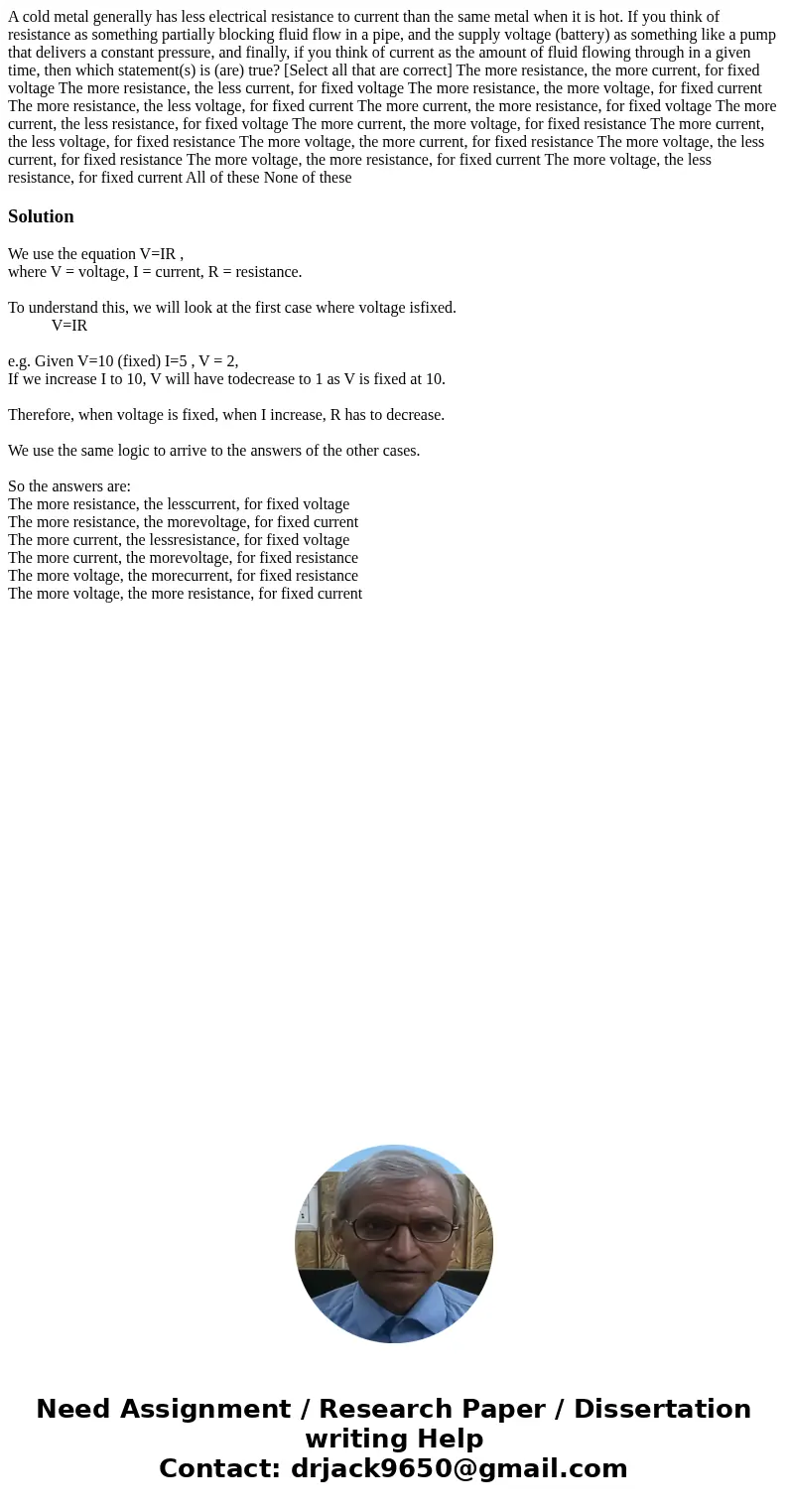A cold metal generally has less electrical resistance to current than the same metal when it is hot. If you think of resistance as something partially blocking fluid flow in a pipe, and the supply voltage (battery) as something like a pump that delivers a constant pressure, and finally, if you think of current as the amount of fluid flowing through in a given time, then which statement(s) is (are) true? [Select all that are correct] The more resistance, the more current, for fixed voltage The more resistance, the less current, for fixed voltage The more resistance, the more voltage, for fixed current The more resistance, the less voltage, for fixed current The more current, the more resistance, for fixed voltage The more current, the less resistance, for fixed voltage The more current, the more voltage, for fixed resistance The more current, the less voltage, for fixed resistance The more voltage, the more current, for fixed resistance The more voltage, the less current, for fixed resistance The more voltage, the more resistance, for fixed current The more voltage, the less resistance, for fixed current All of these None of these
We use the equation V=IR ,
where V = voltage, I = current, R = resistance.
To understand this, we will look at the first case where voltage isfixed.
V=IR
e.g. Given V=10 (fixed) I=5 , V = 2,
If we increase I to 10, V will have todecrease to 1 as V is fixed at 10.
Therefore, when voltage is fixed, when I increase, R has to decrease.
We use the same logic to arrive to the answers of the other cases.
So the answers are:
The more resistance, the lesscurrent, for fixed voltage
The more resistance, the morevoltage, for fixed current
The more current, the lessresistance, for fixed voltage
The more current, the morevoltage, for fixed resistance
The more voltage, the morecurrent, for fixed resistance
The more voltage, the more resistance, for fixed current

 Homework Sourse
Homework Sourse